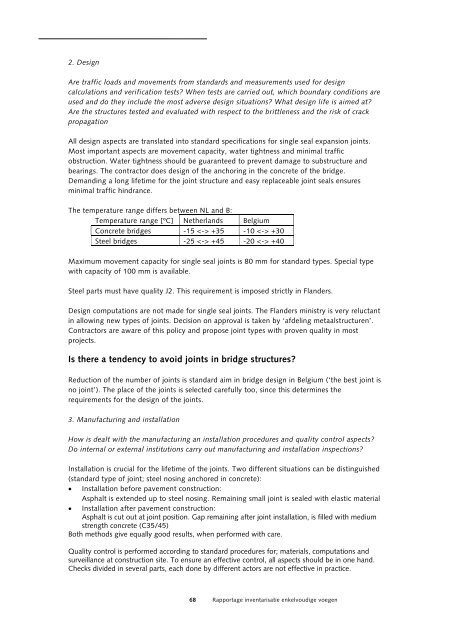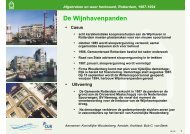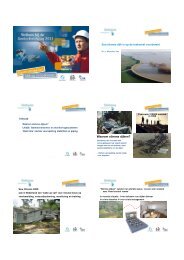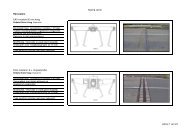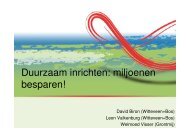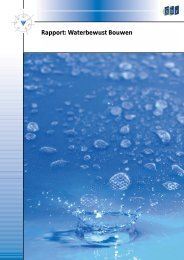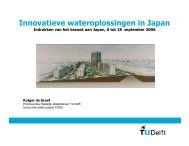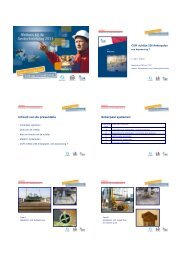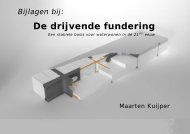Rapportage inventarisatie enkelvoudige voegen - Curnet
Rapportage inventarisatie enkelvoudige voegen - Curnet
Rapportage inventarisatie enkelvoudige voegen - Curnet
You also want an ePaper? Increase the reach of your titles
YUMPU automatically turns print PDFs into web optimized ePapers that Google loves.
2. Design<br />
Are traffic loads and movements from standards and measurements used for design<br />
calculations and verification tests? When tests are carried out, which boundary conditions are<br />
used and do they include the most adverse design situations? What design life is aimed at?<br />
Are the structures tested and evaluated with respect to the brittleness and the risk of crack<br />
propagation<br />
All design aspects are translated into standard specifications for single seal expansion joints.<br />
Most important aspects are movement capacity, water tightness and minimal traffic<br />
obstruction. Water tightness should be guaranteed to prevent damage to substructure and<br />
bearings. The contractor does design of the anchoring in the concrete of the bridge.<br />
Demanding a long lifetime for the joint structure and easy replaceable joint seals ensures<br />
minimal traffic hindrance.<br />
The temperature range differs between NL and B:<br />
Temperature range [ºC] Netherlands Belgium<br />
Concrete bridges -15 +35 -10 +30<br />
Steel bridges -25 +45 -20 +40<br />
Maximum movement capacity for single seal joints is 80 mm for standard types. Special type<br />
with capacity of 100 mm is available.<br />
Steel parts must have quality J2. This requirement is imposed strictly in Flanders.<br />
Design computations are not made for single seal joints. The Flanders ministry is very reluctant<br />
in allowing new types of joints. Decision on approval is taken by ‘afdeling metaalstructuren’.<br />
Contractors are aware of this policy and propose joint types with proven quality in most<br />
projects.<br />
Is there a tendency to avoid joints in bridge structures?<br />
Reduction of the number of joints is standard aim in bridge design in Belgium (‘the best joint is<br />
no joint’). The place of the joints is selected carefully too, since this determines the<br />
requirements for the design of the joints.<br />
3. Manufacturing and installation<br />
How is dealt with the manufacturing an installation procedures and quality control aspects?<br />
Do internal or external institutions carry out manufacturing and installation inspections?<br />
Installation is crucial for the lifetime of the joints. Two different situations can be distinguished<br />
(standard type of joint; steel nosing anchored in concrete):<br />
• Installation before pavement construction:<br />
Asphalt is extended up to steel nosing. Remaining small joint is sealed with elastic material<br />
• Installation after pavement construction:<br />
Asphalt is cut out at joint position. Gap remaining after joint installation, is filled with medium<br />
strength concrete (C35/45)<br />
Both methods give equally good results, when performed with care.<br />
Quality control is performed according to standard procedures for; materials, computations and<br />
surveillance at construction site. To ensure an effective control, all aspects should be in one hand.<br />
Checks divided in several parts, each done by different actors are not effective in practice.<br />
68 <strong>Rapportage</strong> <strong>inventarisatie</strong> <strong>enkelvoudige</strong> <strong>voegen</strong>


